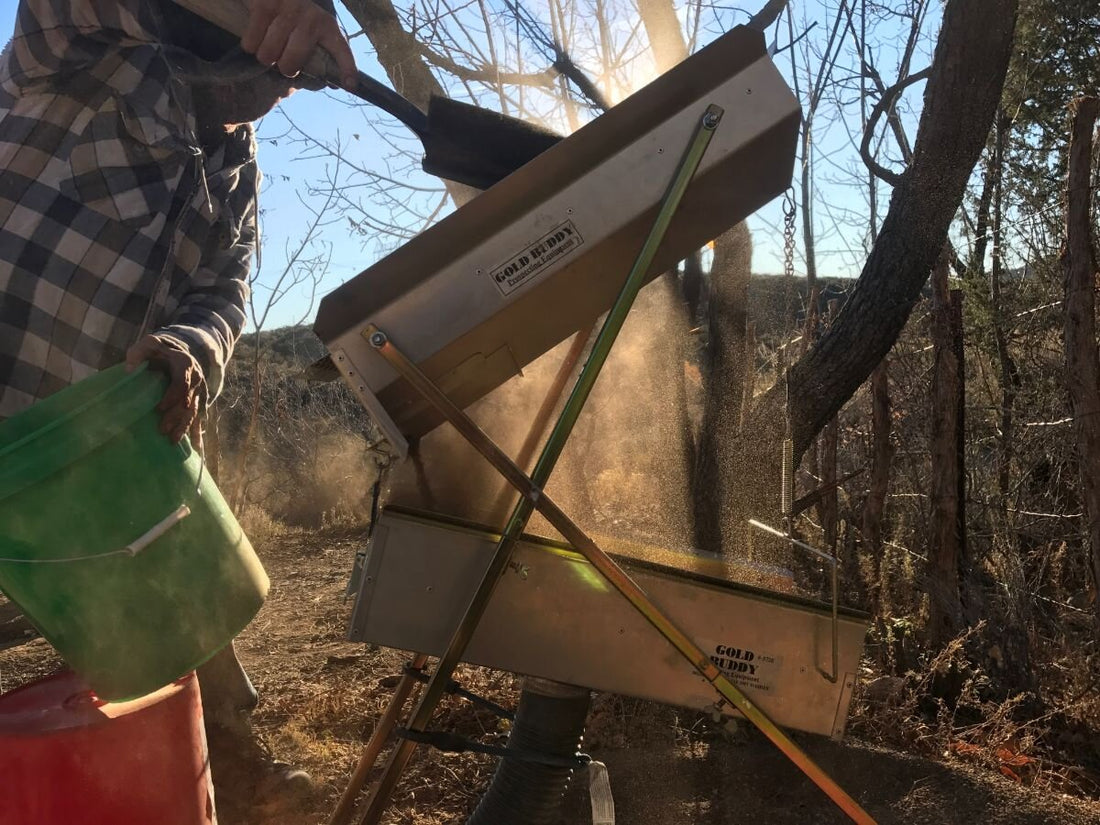
History of Drywashing for Gold
Share
The use of drywashers for gold prospecting dates back to the early 1900s, when prospectors first began to explore the dry, desert regions of the western United States in search of gold. The hot, arid climate of these regions made traditional prospecting methods, which relied on water to wash and separate the gold from the surrounding sediment, impractical.
The first drywashers were simple machines, consisting of a series of vibrating screens and riffles that used the natural force of wind to separate the gold from the sand and gravel. As prospecting technology advanced, drywashers became more sophisticated, incorporating the use of motors or engines to drive the air blowers and improve the efficiency of the separation process.
Today, drywashers are an essential tool for many gold prospectors, particularly in the desert regions of the western United States. They are relatively lightweight and portable, making them easy to transport to remote areas, and they are relatively simple to operate.

To use a drywasher, the prospector first gathers a sample of gold-bearing material, such as gravel or sand from a dry streambed. The material is placed into the hopper of the drywasher, and the machine is turned on. The air blower begins to blow, and the material is fed onto the vibrating screens and riffles. As the material moves through the drywasher, the heavier gold particles are separated from the lighter sand and gravel and collected in the riffles.
After the material has been processed by the drywasher, the collected gold is panned out to remove any remaining sand and gravel. The gold particles are then placed into a small vial or container for storage and later transport to a refinery or other processing facility.
In addition to their use in gold prospecting, drywashers have also been used for other applications, such as separating valuable minerals from ore and removing debris from construction sites. They have proven to be a versatile and effective tool for separating materials based on their density and weight.
